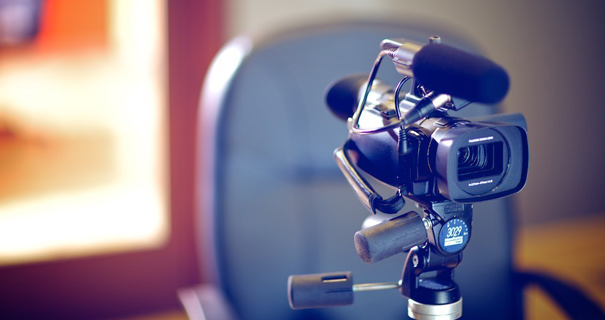The Role of Trial Presentations in Creating Compelling Closing Arguments
The Role of Trial Presentations in Creating Compelling Closing Arguments
Blog Article
How Effective Trial Presentations Can Win Your Instance
The effectiveness of test discussions is typically ignored, yet they play a vital role in forming juror assumptions and affecting instance outcomes. As we discover the elements that add to a compelling trial discussion, the question remains: what details techniques can lawyers use to ensure their message not just reverberates but also compels activity?

Recognizing Your Audience
Understanding your audience is crucial for supplying a reliable trial discussion. Knowing that will be existing in the court room-- jurors, judges, and rival counsel-- permits you to tailor your message in such a way that reverberates with them. Each team has distinct assumptions, prejudices, and histories, which can significantly influence their understanding of the case.
For jurors, it is important to consider demographics, life experiences, and cognitive predispositions. Jurors might originate from various professions and social backgrounds, influencing their analysis of proof and arguments. Involving with them with relatable instances and clear, straightforward language can cultivate better understanding and empathy.
Judges, on the other hand, concentrate on lawful criteria and procedural honesty. Discussions ought to be concise and based in the regulation while appreciating courtroom etiquette. Understanding the judge's preferences and past rulings can better boost your approach.
Efficient communication depends upon identifying these distinctions and changing your presentation design appropriately (trial presentations). By anticipating the audience's reactions and resolving their problems, you can develop a more convincing story that astounds attention and advertises beneficial outcomes
Crafting an Engaging Narrative
A well-crafted story functions as the backbone of an effective test presentation, guiding the audience through complicated details while stimulating psychological reactions. This story should start with a clear and interesting introduction that establishes the stage, detailing the vital themes and issues at stake. Developing a relatable protagonist-- typically the client-- can produce an individual link with the jury, drawing them into the tale.
The body of the narrative should provide the facts in a rational sequence, weaving with each other proof and statement to construct a cohesive argument. Each piece of information need to sustain the overarching style, reinforcing the preferred message without overwhelming the target market with unnecessary details. Change phrases can be particularly powerful, assisting to maintain flow and keep the court engaged.
Eventually, the verdict should resonate psychologically, summing up the situation's relevance and prompting the jury to do something about it via their decision. By crafting an engaging story that is both organized and psychologically resonant, lawyers can efficiently communicate their situation's advantages, making it simpler for jurors to recognize and keep in mind the key points long after the test ends. This approach not only educates but likewise persuades, boosting the likelihood of a beneficial outcome.
Making Use Of Aesthetic Aids Effectively

Aesthetic aids play an important duty in improving test presentations, transforming complicated data into available information that jurors can quickly understand. learn the facts here now By making use of graphes, charts, layouts, and multimedia aspects, lawyers can make clear detailed points and keep jurors' attention. Visual help assist in the understanding of evidence, making abstract principles concrete and relatable.
When selecting visual go to this web-site aids, relevance and simpleness are extremely important. Each aesthetic need to directly support the instance narrative and strengthen vital debates without frustrating the audience. Overly complex visuals can diminish the message, causing complication instead of clearness.
Additionally, the tactical positioning of visual aids throughout presentations is essential. They need to be introduced at zero hours to emphasize critical proof or to show considerable changes or trends. This timing enables jurors to process details properly, boosting retention and recall during considerations.
Additionally, it is vital to make sure that visual aids are technically suitable with the court setting. Experience with the tools and a back-up plan can protect against technical problems that may disrupt the flow of the presentation. In recap, reliable use aesthetic aids can considerably reinforce a test presentation, causing a more powerful connection with the court and an extra convincing case overall.
Engaging Feeling and Empathy
While providing accurate proof is essential, appealing emotion and empathy in trial presentations can exceptionally websites affect jurors' assumptions and choices. Jurors are not simply decision-makers; they are people that react to narratives that resonate on an individual degree. By weaving emotional aspects into the discussion, attorneys can create a connection that transcends mere stats and lawful lingo.
Storytelling is a powerful tool in this context. By providing the case as a narrative that highlights the human effect of the events concerned, attorneys can stimulate sensations of compassion, temper, or also are afraid - trial presentations. These emotions can substantially sway jurors, making them more most likely to understand with the plaintiff or offender

Inevitably, a test discussion that properly involves feeling and empathy can produce a compelling disagreement that resonates deeply, leading jurors to feel an individual risk in the event, thereby enhancing the opportunities of a desirable decision.
Exercising Shipment Techniques
Engaging emotion and empathy lays a strong foundation for test discussions, yet the performance of these elements depends upon the delivery methods utilized by the attorney. Understanding delivery techniques is necessary for making certain that the message resonates with the court. This involves practicing tone, rate, and body movement to boost credibility and link with the audience.
Rehearsing the discussion numerous times permits lawyers to fine-tune their style and recognize areas for enhancement. Recording practice can supply useful insights into one's nonverbal cues and singing inflections, helping to eliminate disruptive behaviors. In addition, getting comments from peers can highlight strengths and weak points, leading further improvement.
Reliable use of pauses can also be an effective strategy; they permit the court to absorb crucial information and enhance psychological impact. Lawyers ought to additionally bear in mind eye contact, as it cultivates depend on and engagement with jurors.
Ultimately, the mix of practiced delivery strategies and the emotional vibration of the presentation can considerably affect the jury's perception, developing a compelling instance that sticks out in their minds. The power of well-executed delivery can not be overemphasized in the quest of a beneficial judgment.
Final Thought
In summary, reliable test presentations are crucial in influencing juror decisions. Grasping shipment strategies better amplifies these aspects, inevitably contributing to a persuasive situation presentation.
Report this page